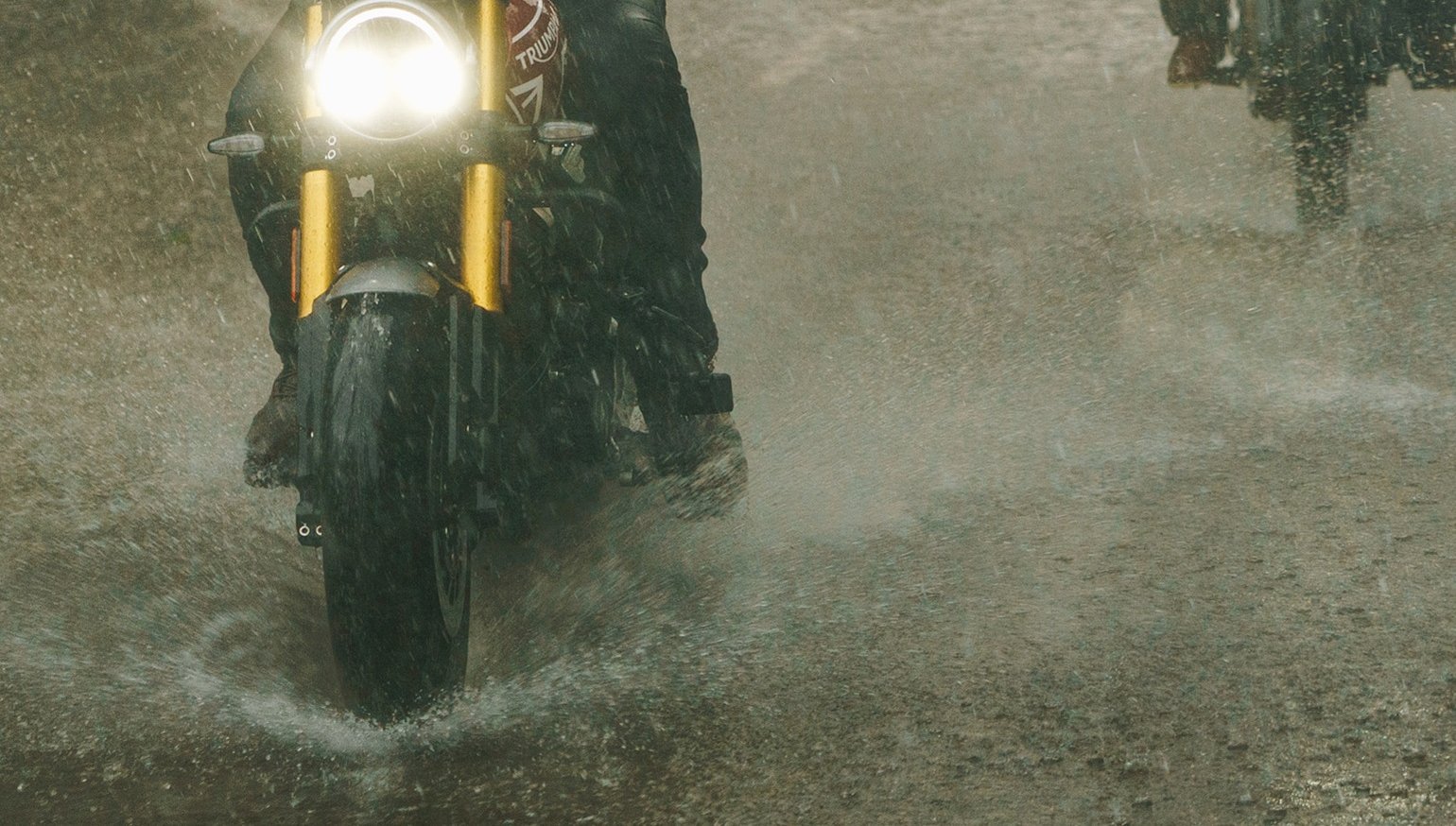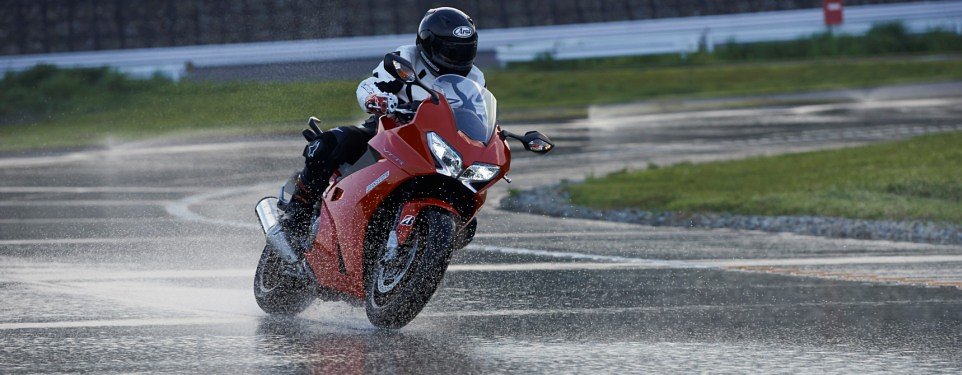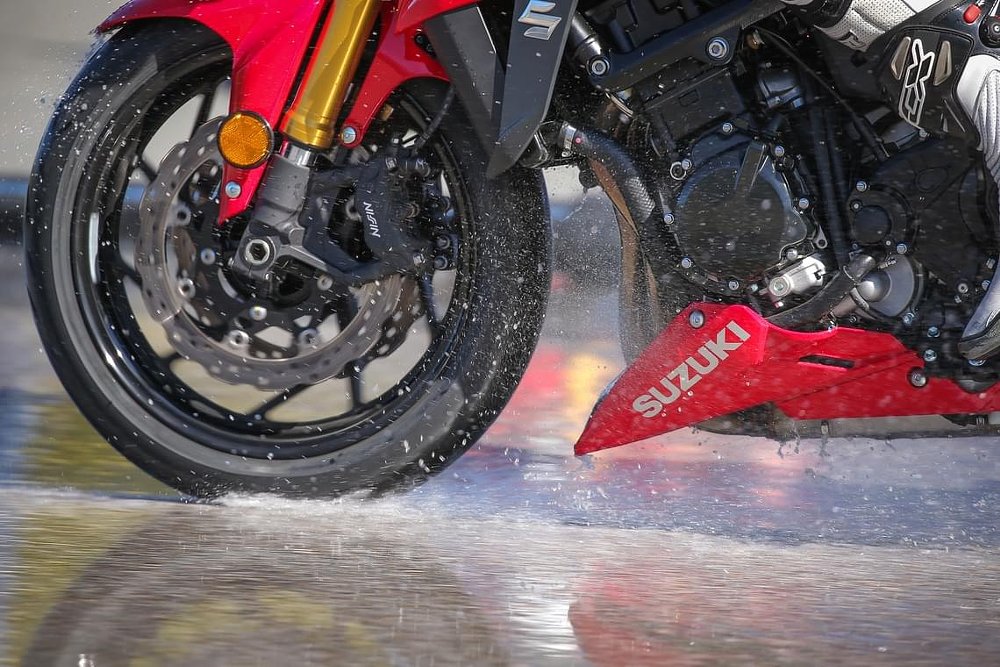Riding in the rain is something that most riders would rather avoid. Understandably so. Rain riding is often uncomfortable and always riskier than riding in dry conditions.
A positive attitude can make the difference between miserable and tolerable, but it's difficult to be positive if your ride is dominated by stress and dread. The good news is that rain riding is no big deal with a little preparation and a strong understanding of how to manage the risks.
Editor's note: Ken Condon is a riding instructor, the author of two books on riding techniques, and has written columns on riding skills for motorcycle print magazines. See more at his website, Riding in the Zone.
Got grip?
Reduced traction is arguably the number one concern when riding in the rain. I was acutely reminded of this while piloting my Triumph Tiger 800 on a very wet New York Safety Track. The Tiger is more than capable of handling rain-soaked pavement, and the Mitas TerraForce tires generally perform well in the wet. So, why did I feel like I was on the verge of crashing at every corner?
Things were immediately better as soon as I slowed down a bit and relaxed. By using my torso and legs for support I reduced unnecessary handlebar forces that use traction. With the tires better able do their job, I sensed an increase in control almost immediately. Stability continued to improve as tire temperature increased. Soon I was having a blast.
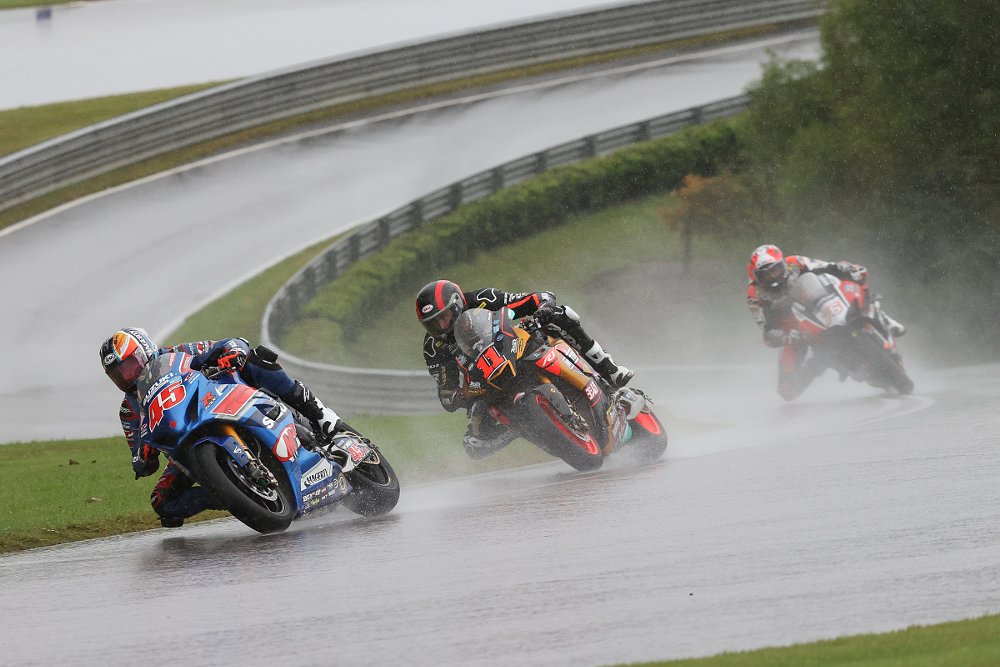
Street riding may not demand as much from our tires as track riding, but traction quantity and quality are less predictable on wet roads. Grip levels vary widely with changes in surface characteristics. You can enjoy excellent traction on textured tarmac one minute only to encounter significantly reduced grip only yards away. We all know how sketchy it is to ride over rain-lubricated painted lines, manhole covers, tar snakes, and road slime that accumulates in the center of the lane. Be aware that the early stages of a rainstorm are particularly hazardous as the accumulated goop mixes with water to become a greasy film.
Uncertainty about the amount of available grip is stressful, but in many cases there’s more traction than people think. Today's street tires have impressive wet weather grip, providing as much as three-quarters of the traction found on dry pavement. However, that percentage of available grip plummets when riding through puddles. Standing water, worn tires, and speed are the ingredients of hydroplaning, a treacherous combination that has bitten many an unaware rider.
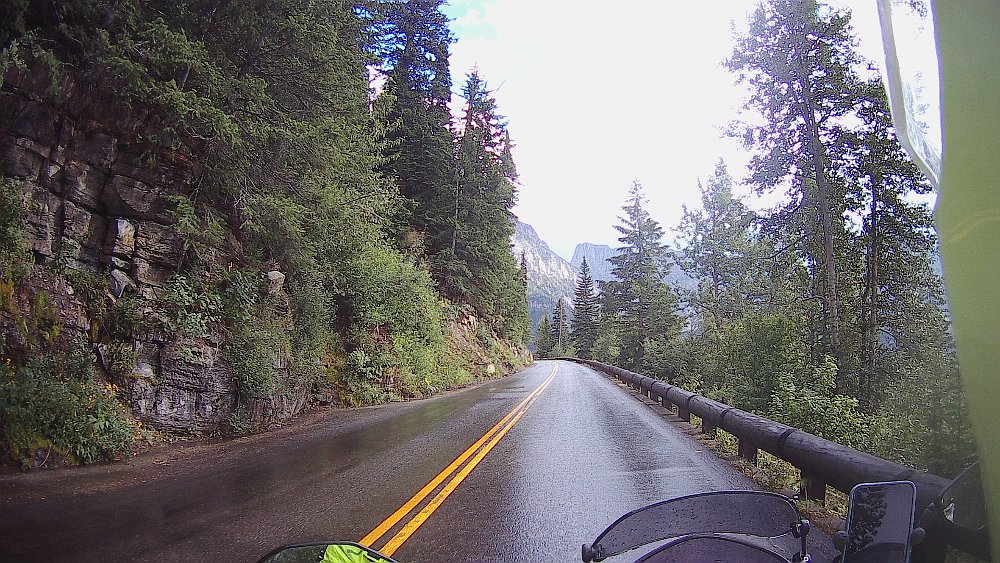
Traction sense
One way to reduce rain riding anxiety is to increase awareness of your innate "traction sense" so you can develop greater feel for what's happening at the tire contact patch. Developing an acute traction sense starts with understanding the forces that increase and decrease grip. Lesson number one is that load is your friend. Simply put, an increase in weight at the tire contact patch increases grip. Conversely, less weight or load on the contact patch diminishes grip.
Lightly place your hand on a smooth table surface and slide it around. Easy, right? Now press down on the table and try sliding again. The resistance you feel demonstrates how load increases friction. Load is good; however you can have too much of a good thing.
Abruptly loading a tire can overwhelm the available traction. (The concept of how a tire has lots of grip under steady pressure but will slip if there's an abrupt input is illustrated well at the 5:28 point in the ChampSchool video below.)
That's why you must be super smooth with your accelerating, braking, and handlebar inputs when riding in the wet. Brake early and lightly for progressive tire loading and accelerate smoothly once your bike is pointed safely toward the corner exit. Progressive but firm controls provide the best grip. As in the dry, skillful trailbraking can help manage stability and direction control. Just be careful to reduce brake force as you increase lean.
Tire trust
Simply understanding the physics of traction isn't sufficient to reduce anxiety. Conscious application of knowledge is key. Some will argue that seat time alone is enough to increase confidence. Maybe for some. But skill development is often accelerated through purposeful practice in a controlled environment. This can be a wet parking lot, suitable for safely performing quick stops and big circles. Take it easy so you can remain relaxed and gradually increase your braking force and lean angle as your confidence grows.
While I'm a fan of parking lot practice, nothing beats a wet track day for opening your eyes to just how much wet grip is available. Racetrack training allows you to practice at real-world speeds on a clean, predictable surface with few distractions. Track days aren't for everybody, but few environments allow you to concentrate fully on developing your traction sense, tire trust, and wet-weather confidence.
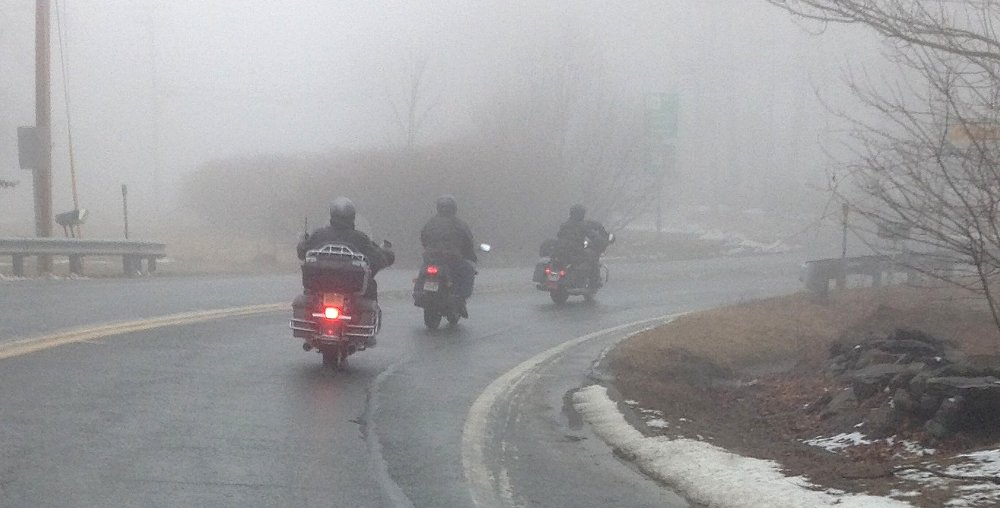
Vision quest
I think we've established the importance of traction management. But there is more to rain riding than managing grip levels. One of the top problems we need to solve is impaired vision from falling rain and fogging. Information-gathering skills are key for safety but you can't manage hazards if you can't see them. Scan aggressively in an out-and-back, up-and-down pattern to spot and monitor possible surface hazards as they near. Prioritize far visual distance to identify problems early so you're not forced to perform traction-robbing emergency maneuvers.
Full-faced helmets are best for fending off pelting raindrops but can also fog to the point where vision is compromised. Pinlock inserts and spray-on rain repellent can help keep eye protection and windscreens clear. We don't have windshield wipers, but the next best thing is waterproof gloves that include a finger squeegee for wiping away rainwater and road spray.
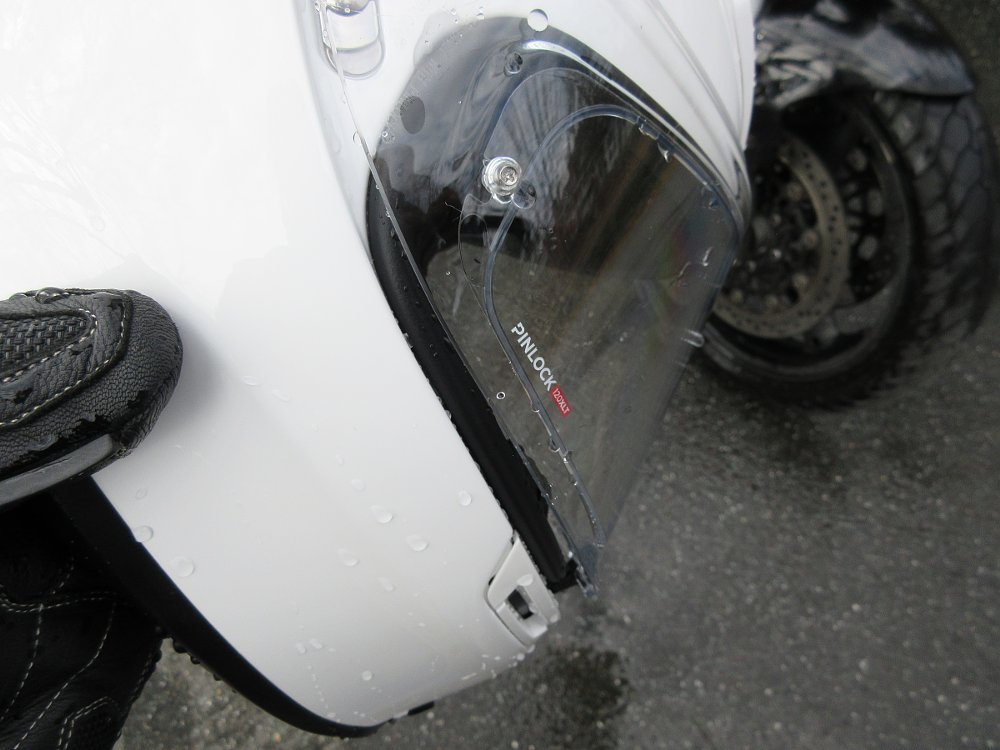
Get into gear
Managing the demands of rain riding is really challenging if you're cold and wet. Decent riding gear can provide relative comfort but more importantly, it fends off distraction, delayed reaction time, and clumsy motor skills.
I find cold, wet feet to be particularly distracting. Do yourself a favor and pay a little more for quality waterproof boots. When selecting footwear, insist on rubber soles that provide sure footing on wet surfaces. Leather soles are a bad idea when riding in the wet.
You can choose between jackets and pants with waterproof layers built in or rain gear worn on top. Both have their benefits and downsides. (For a closer look at the pros and cons of various options, see this RevZilla video.) Waterproof gear is easy but can be impractical in hot temperatures. Layering with rain gear is inconvenient but allows more gear options. There's no right or wrong answer. Remember that drivers also have reduced vision, so select bright-colored gear with retro-reflective material to help being seen. Auxiliary lighting can also help.
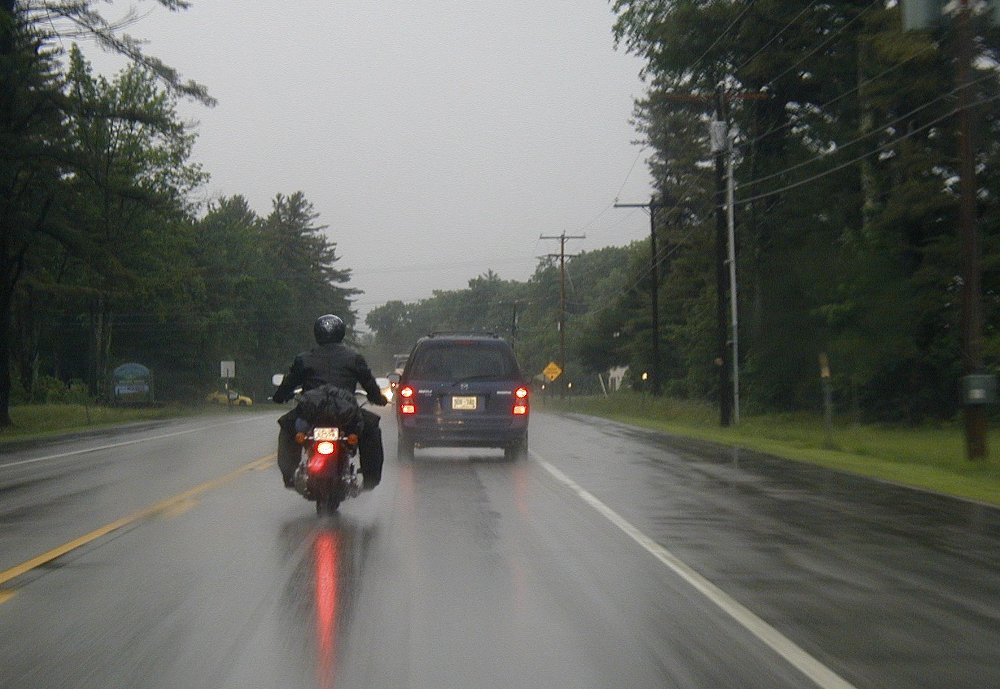
Assume the position
Dynamic lane positioning is another effective tool for optimizing conspicuity. Constantly evaluate situations and respond with a lane position that makes it easy for drivers to see you and for you to see them. Back off from vehicles ahead and favor the left portion of the lane to see and be seen by oncoming traffic. There are times when it makes sense to briefly move to the right portion of your lane to show yourself to a driver on the right who is waiting to pull into your lane. This strategy applies in both wet and dry weather.
Cornering in the rain can be stressful, but you can optimize grip and vision by embracing an outside-inside-middle path of travel. A wide entry requires setting up a righthand turn near the centerline and along the road edge for lefthand turns. You then move across the lane toward the inside and then exit toward the middle of the lane to complete the cornering line. The wide approach gives you the best angle of view into and through the curve and the larger radius requires less lean angle that uses less traction. Do this outside-inside-middle line only when safe to do so!
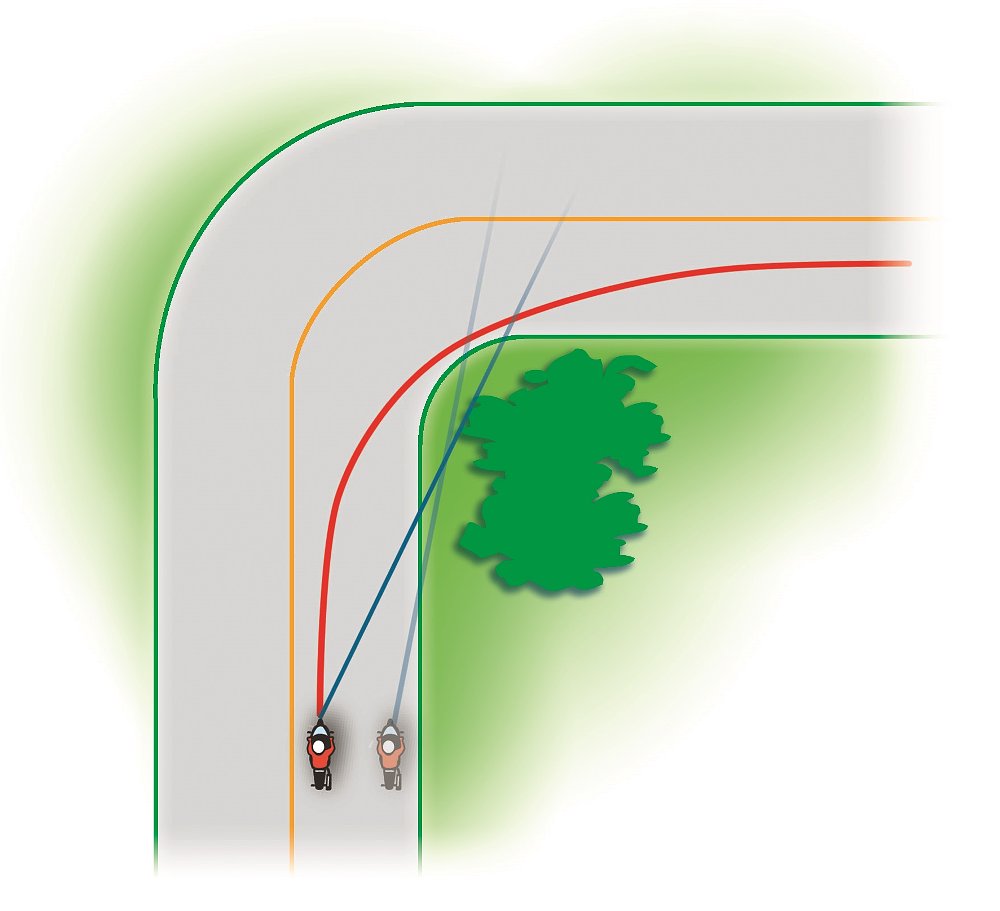
Remember that there may be road surface hazards that you need to consider when choosing your lane position. You may need to avoid the center portion of your lane on heavily travelled roads where vehicles drip fluids all day long.
Just stop
Emergency braking introduces sudden, abrupt spikes in load as you try to stop quickly. It takes expert-level control to keep the tire from skidding as the bike pitches forward. Thankfully, most of us now benefit from having the ABS safety net that allows you to apply the brakes rapidly.
If your bike has ABS, it's best to apply both brakes as quickly as possible and let the technology do the work of managing skids, if the motorcycle is not leaned over. Although ABS systems work well, you'll get the shortest stopping distance if you can manage to apply the brakes a bit more progressively to load the front tire. This is particularly beneficial in wet conditions, where abruptly grabbing the front brake will immediately trigger the ABS before the front tire has enough load. Practice emergency stops on a wet parking lot before you're faced with needing to perform in the heat of battle.
For those of us without ABS, it is critical to avoid skidding. Do this by braking firmly but progressively! Squeeze the front brake lever to compress the suspension and load the tire before squeezing hard to get the bike stopped. This two-step process happens very quickly but not abruptly. Squeeze hard then squeeze harder! Use the rear brake firmly but avoid skidding and fishtailing.
A positive attitude and keen situational awareness make rain riding less stressful and safer. Being mentally prepared preloads your mind and body for the task. Detect problems early to avoid abrupt braking or maneuvering. Remind yourself to support your weight using your torso, legs, and feet so you can be light on the handlebar. Use soft braking, accelerating, and countersteering inputs. A little focused effort and purposeful practice in conjunction with an accumulation of wet weather miles will go a long way toward making rain riding a mere inconvenience with little to no stress.
The weather always looks worse through a window. Get out there!




